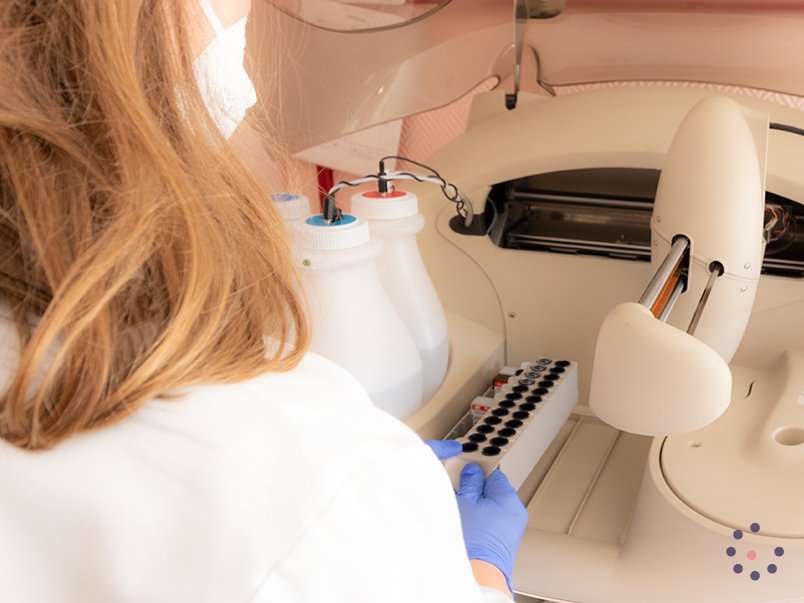blog tambre
Tambre Fertility Clinic: pioneer in conducting in-house seminal plasma biochemistry

Table of contents
Many patients that decide to trust us to enlarge their families admit that they have chosen us for our capacity of offering a wide range of services. This means that the patient does not have to go to other clinics and they can be reassured of a full and complete diagnosis from us. One such service we provide is seminal plasma biochemical analysis. If you want to know more about the importance this test and how we do it at Tambre, continue reading!
What is seminal plasma?
Seminal plasma is the combination of secretions from the epididymides and accessory glands, in other words, the seminal vesicles, the prostate, the bulbourethral glands and the Littre’s glands. To obtain the plasma of the ejaculate, biologists at our laboratory separate the sediment (spermatozoon) by employing a centrifugation technique. What remains after this process is a medium we call plasma.
In the seminal plasma we find specific components of each gland that we use as biochemical markers of its function. These markers are the citrate (component of the prostate), the fructose (related with the seminal vesicles) and the maltase (a-glucosidase), present in the epididymides.
What is seminal plasma biochemistry?
Biochemical tests of seminal plasma consist of determining the values of the components previously mentioned (citrate, fructose and maltase) in the sample. For that, the team at the Andrology Laboratory need to use, on one hand, a series of reactives that help to obtain such determinations and, on the other hand, a “machine” called A15.
The A15 of BioSystems is an automatic analyser that provides the diagnosis in vitro of random access and is designed to carry out clinical tests of biochemistry and turbidimetry. The analyser carries out the analysis patient by patient and allows the continued introduction of samples.
The possible delay present in this technique comes from the need to lend the sample some 30 minutes at room temperature after it has been frozen. With that we expose that the seminal plasma biochemical analysis can be made in fresh samples and in those that have been stored, whenever the defrost process is followed.
Why don’t all clinics carry out this test?
The majority of assisted reproduction clinics don’t carry out tests such as seminal plasma biochemistry in their laboratories due to various limitations. First of all, not all biology professionals are used to performing this type of diagnosis technique on a daily basis. At Tambre, however we have a team that has experience of this and it is a technique which is taught on the TambreLab training programme for future assisted reproduction biology professionals.
In the same way, as previously mentioned, not all the fertility clinics have the facilities, equipment and technologies to hand to carry out this type of diagnosis test, referring in this case to the A15 analyser.
Lastly, it is essential that the clinic can count on an Urology Unit to interpret the results of the seminal plasma biochemistry. In Tambre we are privileged to have Dr. Ricardo García Navas, the urologist who is able to explain the results to patients and, where needed can offer the most efficient way forward in each case if the results are not in the required range.
For practical purposes, what does the seminal plasma biochemistry provide?
As we explained at the beginning of the article, each analysed component in the seminal plasma biochemical analysis is related to one of the glands of male reproductive system. In this sense, if the citrate determinations are not within the normal range, it means there is an issue with the prostate, if fructose values are not as expected there is a problem with the seminal vesicles and if the maltase results don’t work out, we will have a epididymes pathology.
The biochemistry analysis of seminal plasma is so useful to complete other male fertility studies, such as the seminogram. The more complete the study of the male factor, the fewer cycles will be made in vain, if we are aware of any issues early on this will lead us to offer a more effective diagnosis and treatment.
